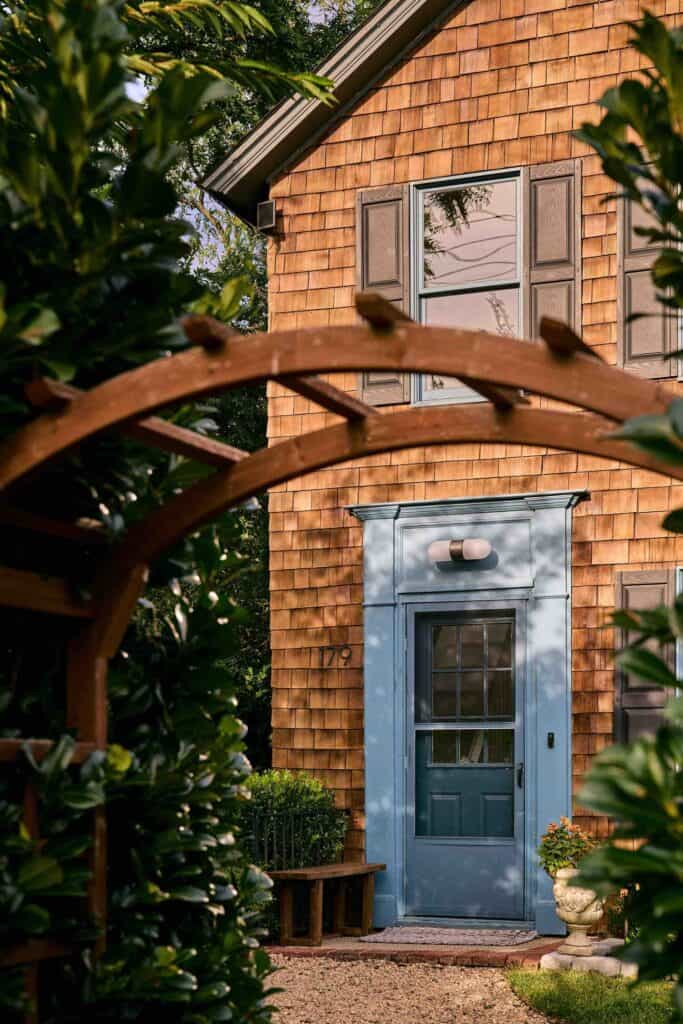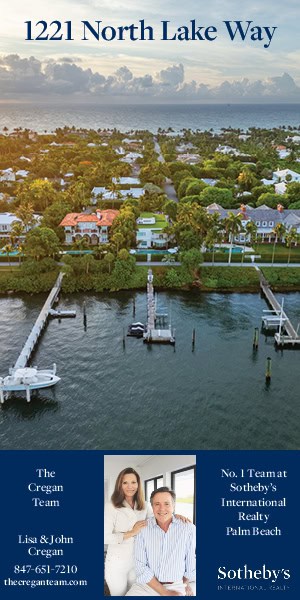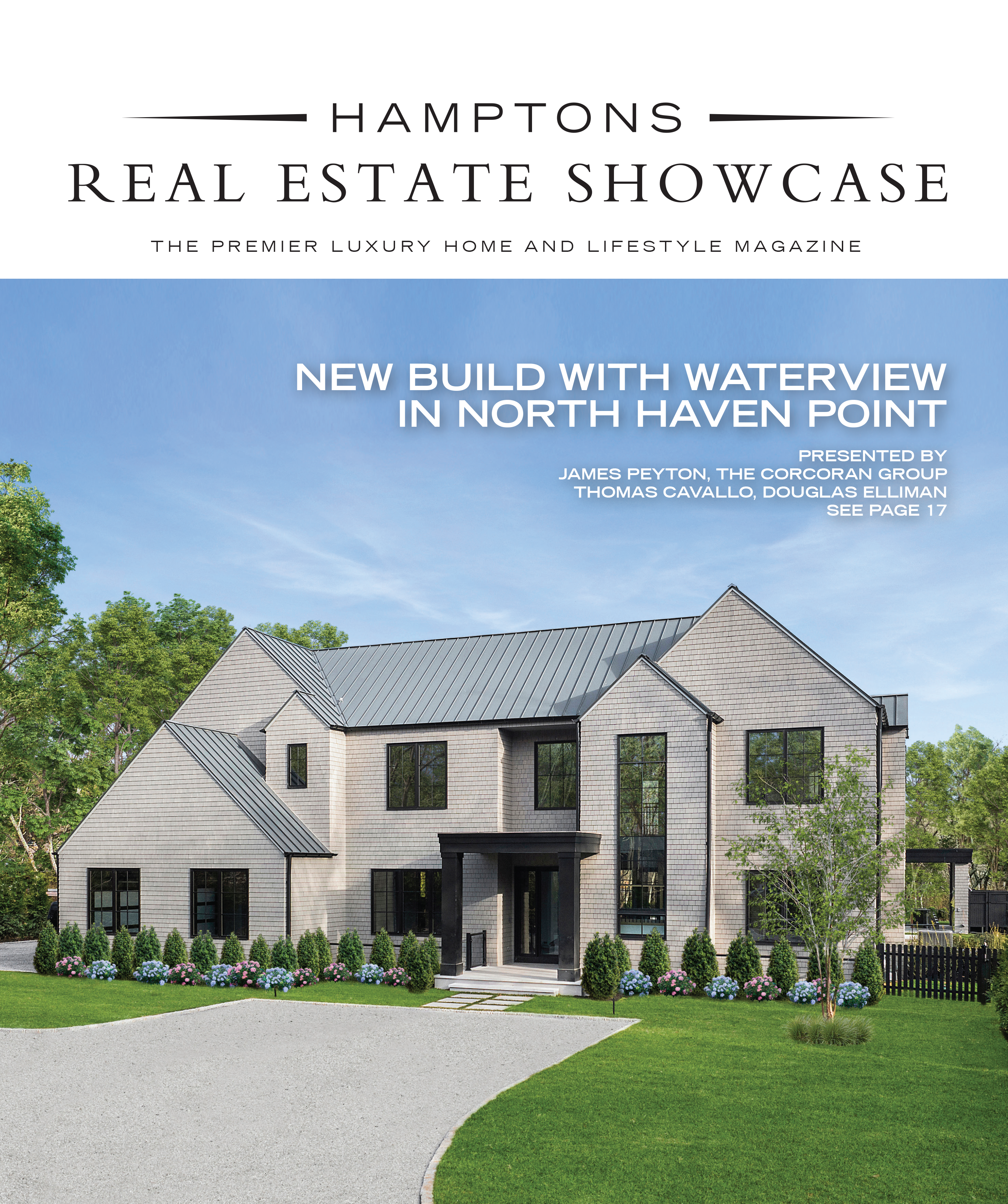Tips on the popular Hamptons design style.
What’s more Hamptons chic than finding wonder in natural elements? That’s the principle behind wabi-sabi, a laid-back design concept gaining popularity on the East End. But what defines the style and why do Hamptonites love it? Our designers shared their insights.

What is wabi-sabi?
Though it’s had a major influence on interior design, wabi–sabi was born as a worldview. “As a concept, wabi-sabi is a Japanese philosophy that celebrates the beauty in simplicity, imperfection and the inevitable passage of time,” said Kathy Kuo, founder and CEO of Kathy Kuo Home. “It’s a reminder that nothing lasts forever and there truly is beauty all around us, especially where we least expect it.”
Designer Paul de Andrade, founder of Studio Kestrel which has projects around the Hamptons, defines it as the use of organic, weathered and hand-made pieces in the design of indoor and outdoor spaces. “Whether it be through artwork that infuses free-form brushstrokes and an unexpected palette… or rough-hewn limestone from a local quarry,” wabi-sabi can turn a sterile space into one full of authenticity and intrigue, Andrade explained.
“My favorite aspect of the wabi-sabi philosophy is its relationship to time,” agreed Noa Santos, founder of NAINOA, an architecture and design firm with a studio in the Hamptons. “Materials, for example, are chosen for longevity. They are meant to become even more beautiful with age and in that way have a timeless quality.”
Wabi-sabi in furniture & decor
De Andrade loves the wabi-sabi design scheme so much that he brings it home. At his house on the Bellport Bay, the designer exposed his wooden ceiling beams that were hand-cut by a two-man saw 170 years ago. Outside, “myriad ebony-stained wooden outdoor furniture pieces that I built myself are hidden throughout the grounds, nestled between flower beds bursting with blooms in the summer,” he said.
Wood plays a big role in the approach. “You can find elements of wabi-sabi in all the special ways that natural materials and hand-crafted furniture elements have individual differences and imperfections,” Kuo said. For example, two tables made from reclaimed wood won’t look exactly alike, even if they’re the same style, she noted. “Look for visual elements like knots and whorls in wood, slight imperfections in a woven or hand-painted pattern and flowing lines that feel inspired by natural forces like the waves,” she said.

Wabi-sabi goes Hamptons coastal
While the design technique is popular on the East End, it can be tricky to incorporate. Many materials can’t tolerate coastal climates, Santos said. “Furthermore, most of the work we do in the Hamptons is highly focused on a particular lifestyle,” he added. “Our clients almost always want their home to be a retreat, so materials must feel refined and bespoke but simultaneously be low maintenance.”
To make it fit, his firm focuses on materials that are built to withstand wear, tear and salt. Rough-hewn wood case goods, patinated metal finishes like antique brass and textured upholstery like bouclé are good choices for the beach, de Andrade suggested.
“I like to think of a classic coastal home as a space that really gives a nod to the surrounding environment,” Kuo said. “With all the beautiful scenery present out East, it’s not hard at all to use that as a muse.”












![Welcome to Le Beau Chateau, a grand French-style manor house originally built in 1937 on a 52± acre property restored and reimagined to perfection. Boasting pedigree, provenance and stunning design, 104 Dans highway has been magically transformed with a seamless infusion of bespoke finishes, quiet luxury and comfort. Represented by Rob Johnson of @brownharrisstevens. [link in bio]](https://hamptonsrealestateshowcase.com/wp-content/uploads/sb-instagram-feed-images/470917491_18481320940030135_2744230950629794022_nfull.webp)
![Located south of the highway on a quiet street, this airy and fresh, newly built 7 bedroom, 7.5 bath home exemplifies superb design with clean lines on all three levels. Bright and airy, with an open floor plan and walls of sliding glass doors overlooking the backyard and pool, this house is designed for today’s lifestyle. Represented by @sharonsternhomes of @sothebysrealty. [link in bio]](https://hamptonsrealestateshowcase.com/wp-content/uploads/sb-instagram-feed-images/470870424_18481119913030135_1232666844537840589_nfull.webp)
![This stunning waterfront home in Quogue offers direct access to Shinnecock Bay via a private boardwalk. 36 Second Neck Lane features expansive outdoor living spaces with a full kitchen, BBQ, pizza oven, and bar, plus a heated saltwater infinity pool and oversized hot tub. Represented by Nick Messina of @douglaselliman. [link in bio]](https://hamptonsrealestateshowcase.com/wp-content/uploads/sb-instagram-feed-images/470669759_18480889417030135_2117744731444738551_nfull.webp)
![Conveniently located in Water Mill, this turnkey one-level contemporary is sited at the end of a winding driveway on 1.60± private acres. The expansive, move-in ready residence has undergone a complete remodel and features 4 bedrooms and 3 bathrooms across 2,630± sq. ft. of living space. Represented by Craig Beem of @brownharrisstevens. [link in bio]](https://hamptonsrealestateshowcase.com/wp-content/uploads/sb-instagram-feed-images/470491935_18480720649030135_1941783907149758766_nfull.webp)
![Is there anything more magical than the holidays in the Hamptons? Maybe stress-free hosts who can actually enjoy them! To help you skip the last-minute scramble, we turned to expert Kathy Kuo for her top tips on getting your home holiday-ready 🎄🥂 [link in bio]](https://hamptonsrealestateshowcase.com/wp-content/uploads/sb-instagram-feed-images/470324287_553988460734287_2505109464299263530_nfull.webp)
![Cheers to holiday hosting! 🍸✨ Create the perfect at-home bar to keep the good times flowing all season long. From festive cocktails to cozy vibes, let your space shine as the ultimate gathering spot. [link in bio]](https://hamptonsrealestateshowcase.com/wp-content/uploads/sb-instagram-feed-images/470165157_1642639376465060_2596893328383899816_nfull.webp)
![A partially built 19,980± sq. ft. mansion on one of the Hamptons’ most prestigious streets, left abandoned since 2018, has finally found a buyer! The sprawling property — the largest oceanfront parcel on Meadow Lane, features arched windows and doorways, a flat roof with pyramids and conical peaks, plus a sandstone facade. Co-listed with @bespoke.realestate and @hamptonsluxurymarketleader of @thecorcorangroup. [link in bio]](https://hamptonsrealestateshowcase.com/wp-content/uploads/sb-instagram-feed-images/469724902_18479864281030135_7735465365115439625_nfull.webp)
